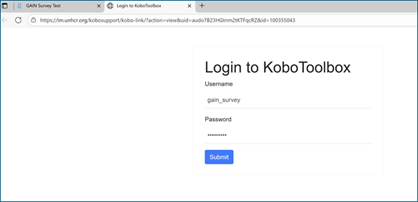|
An Example (in PRO01 and PRO01A) in this survey is an organized initiative taking place in 2025 that includes or solely focuses on improving/producing national statistics on refugees, IDPs and/or stateless people. These examples encompass a wide range or they might involve working on a data source like implementation of a survey, administration of a database, work on a census, a data integration project between different data sources, or work on a non-traditional data source. Examples could also be tools like developing strategies, guidance documents, or the organization of training sessions and workshops. Examples can occur at different levels, whether on a national, regional, or global scale, and they may be at various stages of progress in 2025, including planning or implementation phases. Additionally, examples can entail collaboration with partners.
Example leads can be countries, institutions or CSOs (or other). Country-led examples include activities led by National Statistical Offices or another Government entity conducted in their national context, usually as part of the national statistical system. Examples led by international organizations without explicit country leadership are counted as institution-led examples, while examples led by civil society organizations or other entities are CSO-led examples.
A Partnership includes involvement of a national, international, or academic partner in the example implementation. Respondents could list multiple partners.
The Future Examples (FPR) section enables respondents to provide details on anticipated examples that may start in 2026. Responses provided support forward-looking planning and help identify emerging trends, align efforts across stakeholders, and enhance collaboration between national, regional, and international actors to advance statistical inclusion efforts.
The difference between current and future examples:
- Current examples: Current examples are examples that are ongoing at the time of the GAIN survey, meaning that some time / capacity / staffing / financial investments have been made, for example, survey design / budgeting / training / enumeration / listing or other example-related activities have started.
- Future examples: Future examples are examples for which no significant investments have yet been made in terms of design / budgeting / training / listing / enumeration etc.).
Data sources and tools (PRO08) used to provide information on the example can be: (A) statistical surveys, (B) government records and databases, (C) general population censuses, (D) combining data from many places, (E) non-standard sources like humanitarian groups or social media data, (F) developing strategic documents, (G) following guidelines or toolkits, (H) giving training or workshops to get data, and any other source not listed where data comes from.
Challenges (in PRO19 and PRO20) in this survey refers to significant difficulties encountered during the example such as (A) trouble getting data from everyone, mistakes in data collection(C) difficulties in identifying specific groups like refugees or stateless people, (D) concerns about data confidentiality and privacy, as (E) resource constraints (like not having enough money or people), (G) issues related to politics or security, (H) delays or issues with data quality, (I) not having the right skills or tools for the project, (J) lacking clear instructions, or any other unique problems faced during the example.
|






